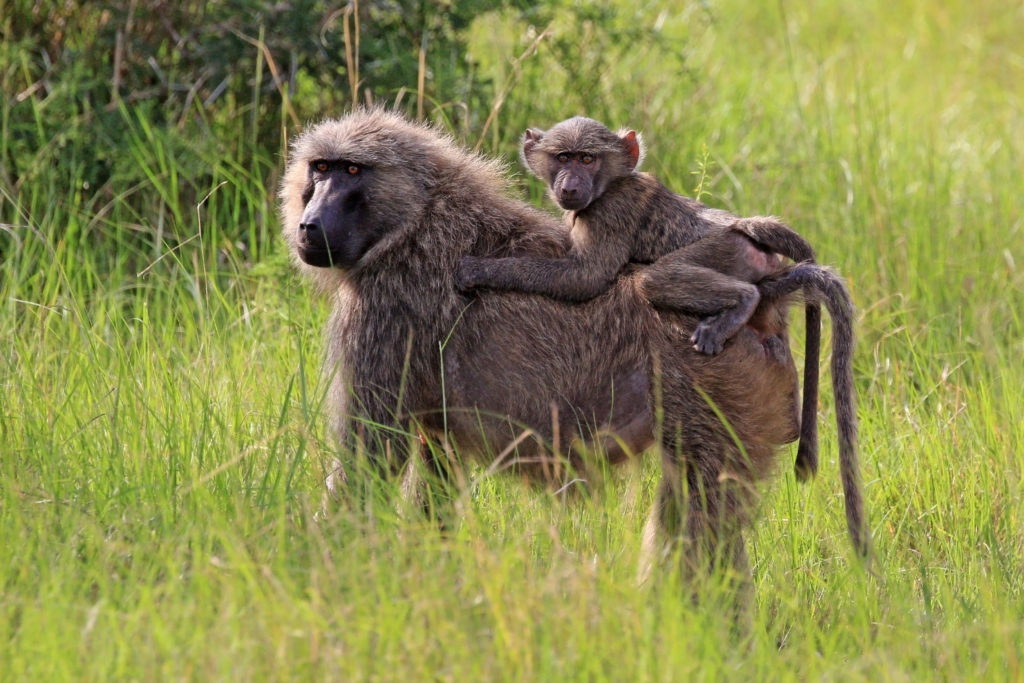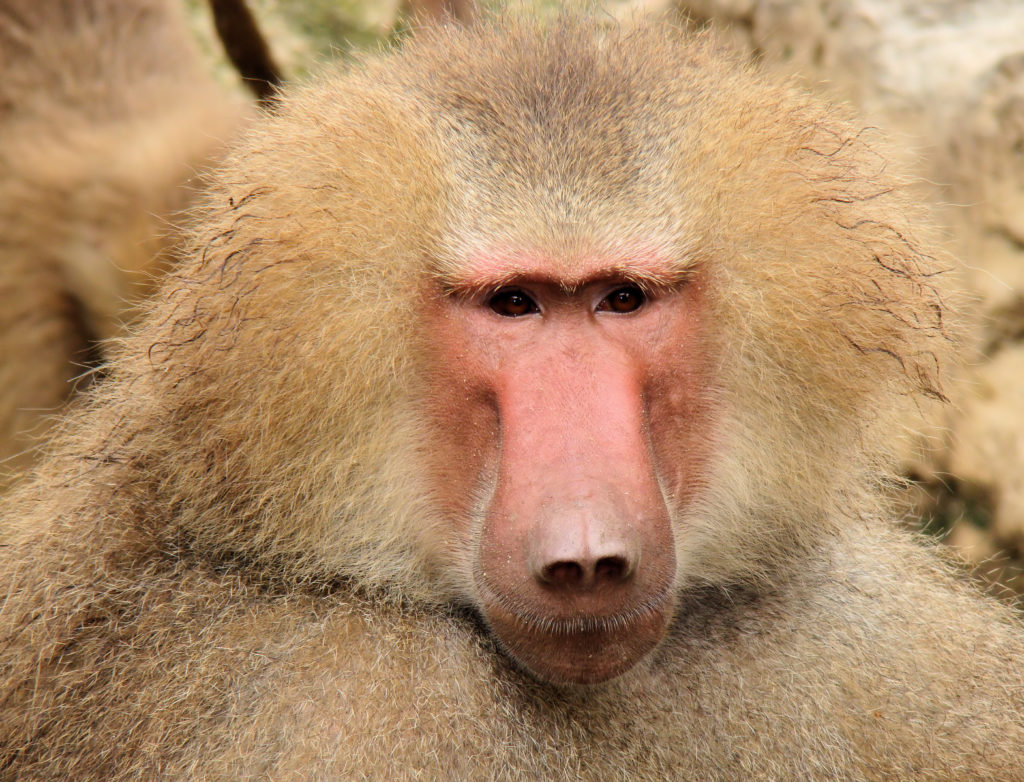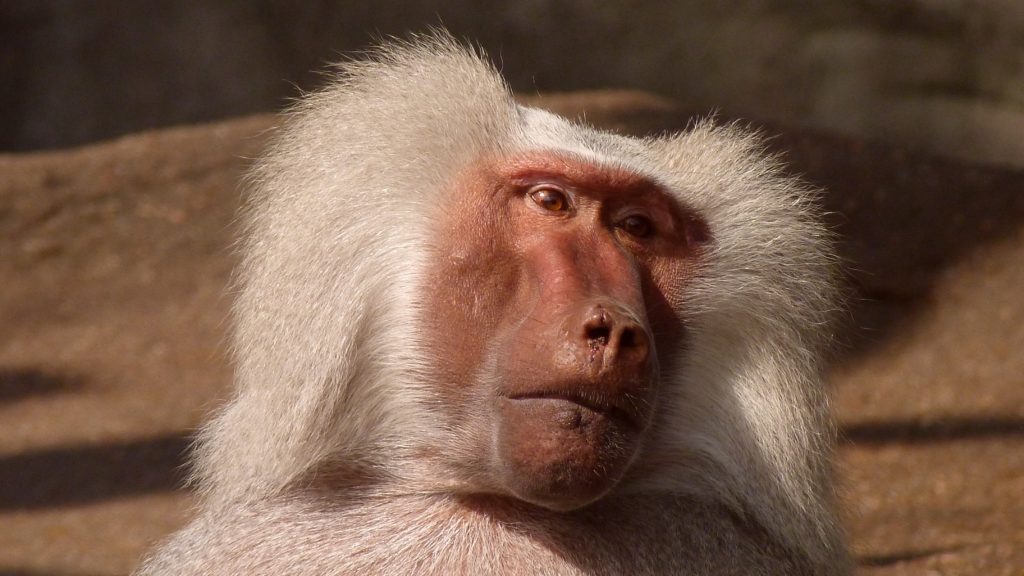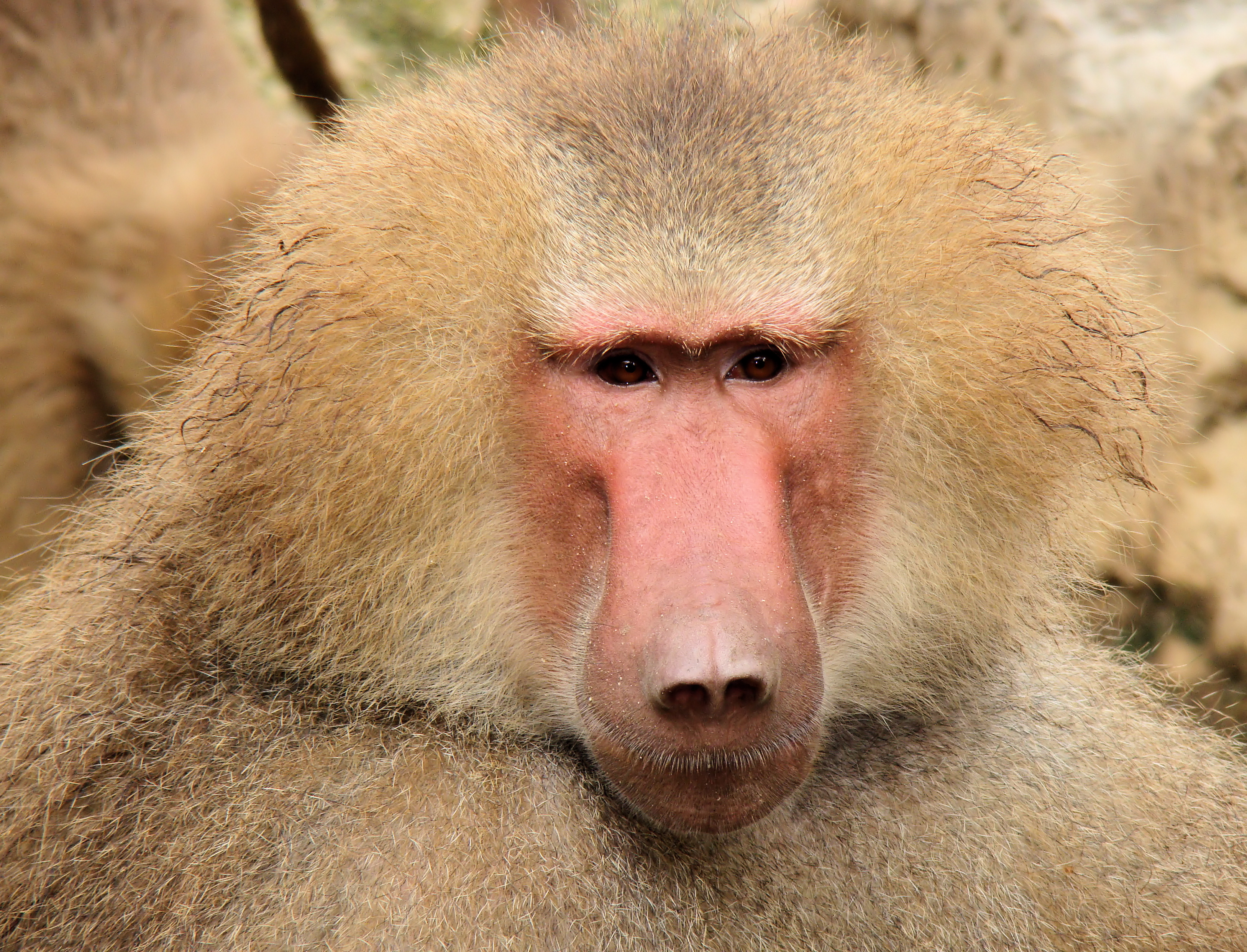Baboons are a type of monkey that’s found in Africa and the Middle East. While many people know of their existence, not many know a lot about this wonderful animal. That’s why we have created this list of 25 interesting and fun facts about baboons.
1. Male baboons are a lot larger than female baboons, almost twice larger to be exact. On average, baboons reach a height of 14 to 30 inches, when measured at the shoulder, and a weight of 50 to 100 pounds.
2. They have a long, almost dog like muzzle, with a very strong jaw. Their mouth is filled with sharp canines.
3. The body of a baboon is covered with dark olive or yellow fur. The males and females look almost identical, except for their size difference, and the fact that females don’t have the long hair around their necks.
4. Baboons mainly live on the ground, but they do travel long distances in the early morning and late afternoon, during feeding time.
5. They don’t have prehensile tails which can be used to swing or climb trees, therefore, they use their hands and feet.
6. They aren’t very picky eaters and will eat any type of food that is available. However, the majority of their diet consists of fruits, seeds, berries, roots, tree bark, tree sap and various insects, shellfish, fish, birds and small mammals.

7. Baboons live in groups called “troops.” Troops are made up of about 7 to 8 males with twice as many females and young. The dominance in the troop is established through fights, much like apes.
8. Along with the males, the females also have a hierarchy. For example, the females at the top of the hierarchy are in charge of accepting or rejecting new young, sexually mature males to the group.
9. The social bond between members is established with grooming. Baboons spend a certain part of their day removing ticks from the fur of other members of the group and this acts as a courtship of sorts.
10. Baboons use 30 different sounds for communication. They’re able to scream, grunt and bark, however, they also yawn, smack their lips and shrug their shoulders to get their message across.
11. They are very territorial animals and will aggressively defend their territory, family and members of the group against other baboons and predators.
12. Their main predators are large cats, such as lions, hyenas, leopards, cheetahs, and wild dogs, and eagles, crocodiles and pythons.
13. Baboons reach sexual maturity between the age of 5 and 8. When they do reach sexual maturity, the young males will leave their groups while the females stay.
14. Baboons mate throughout the year.

15. A female baboon will remain pregnant for 6 months and birth usually ends up with one offspring. The mother will carry her offspring close to her stomach while she moves.
16. After several weeks, the offspring will be strong enough to start riding on the mother’s back.
17. Baboons can survive for 30 years in the wild and up to 45 years in captivity, due to a lack of predators.
18. There are five different species of baboon, the olive, the yellow, the chacma, the Guinea and the hamadryas. They are all scattered across various habitats in Africa and the Middle East.
19. A troop of baboons can range from just 10 to over 200 members, depending on the availability of food in their current habitat.
20. Any given troop can consists of related bands that are made up of several different clans, with each clan having a number of smaller harem families made up of mothers, their offspring and the male.

21. Unlike the other baboon species, the hamadryas have a patriarchal “One Male Unit” social structure. All the female baboons in the troop will groom the alpha baboon while the males compete for the status.
22. While we share 91% of our DNA with them, baboons are not classified as apes. Researchers feel like there is a variety of different factors that differentiate a baboon from an ape, therefore, they are classified as monkeys.
23. Baboons have the same number of teeth and the exact same dental pattern as humans.
24. They are Old World monkeys that split from humans and apes on the Primate family tree about 30 million years ago.
25. In Egyptian mythology, Baby was the deification of the hamadryas baboon and, therefore, it was viewed as a sacred animal. It was a known attendant of Thoth, so it’s recognized as the sacred baboon.




